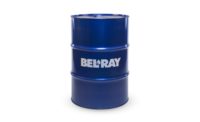Over the next four years, the food-grade lubricant market is expected to grow by $40.8 million at a compound annual growth rate of 3 percent, according to Technavio Research. Why? Preventing food contamination is big business.
Incidental food-contact lubricants must meet the U.S. Food and Drug Administration (FDA) Code of Federal Regulations Title 21 Section 178.3570 (21 CFR), which gives guidance on ingredients by providing a specific list of chemical compounds and additives allowed, says Orsi Dézsi, international business lead, food safety – equipment and chemical evaluation at NSF International, based in Ann Arbor, Mich.
“The lubricant needs to be odorless, colorless, and tasteless,” Dézsi says. “The key phrase is incidental food contact. Under normal operations, the lubricant should not be in constant contact with the food.”
The regulation sets a 10 parts per million limit for lubricant base oils (for example, mineral oil) that can be present in food if incidental contact should occur, Dézsi says.
“H1 and H3 grade lubricants can be used on food equipment,” says Bart Dobek, president, and lead food safety consultant at BD Food Safety Consultants, based in Naperville, Ill. “H2 lubricants may not, and most of the food manufacturing/processing facilities are discontinuing the use of H2 lubricants.”
H2 lubricants are food-grade but used on equipment and machines in locations where there is no possibility of coming in contact with food.
Recently, a new H1X thickener, Blachford’s Lithium 12 HX-1 grease pre-thickener, was approved by NSF, which is the first lithium-based thickener approved by the NSF, says Chuck Coe, president of Grease Technology Solutions in Round Hill, Va. HX-1 products can be used to make H1 grease, which is suitable for incidental food contact.
“(Processors) still need H1 greases to lubricate food machinery where there is potential for incidental food contact or contamination,” says Coe. “There is talk of eliminating H2 as a category.”
Enhancing food safety
Antimicrobial lubricants are a step toward safer lubricants in the food industry, Dobek says.
“With more focus on food safety in recent years, a lot of food manufacturers are looking into antimicrobial lubricants that protect grease from microbial growth,” says Dobek. “Lubricants are an important part of HACCP food safety systems and considered as one of the chemical hazards if used improperly.”
Processors are working closely with manufacturers to find the best fit – or formulate the best fit – while ensuring the product meets regulatory guidelines, Dézsi says.
“What we have seen is a big trend toward processors really partnering with their lubricant supplier,” Dézsi says. “Both in best practices for storing lubricants at the processing facility and if there are any special performance properties that the processor requires.”
Handle with caution
Despite improvements, food-grade lubricants are still oils and need to be treated accordingly.
“The main concern from the food safety perspective is the excess of lubricants applied to the machinery, especially in close proximity to food contact surfaces,” Dobek says. “Despite lubricants being ‘food-grade,’ they are still chemicals, and in large amounts or when improperly used may cause some food safety issues.”
Lubricants’ food-grade distinction ensures they meet regulatory guidelines and cannot contain carcinogens, mutagens, teratogens, mineral acids or intentionally added heavy metals, says Dézsi. “It does not mean that the lubricant is free of allergens or that the lubricant is certified kosher and/or halal,” he says.
As food-grade lubricants grow over the next few years, lubricants with a focus on food safety will certainly have an edge.






